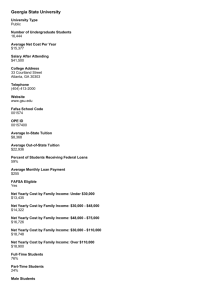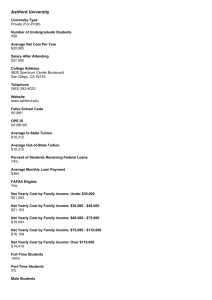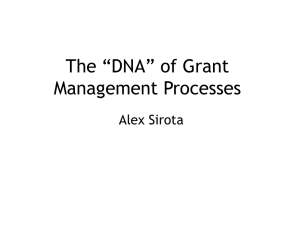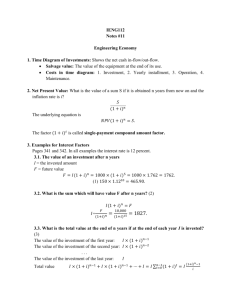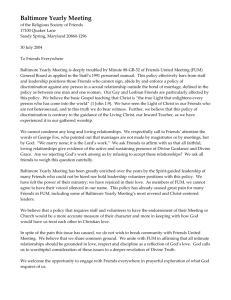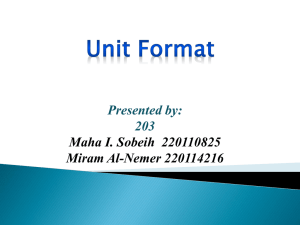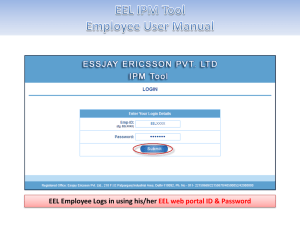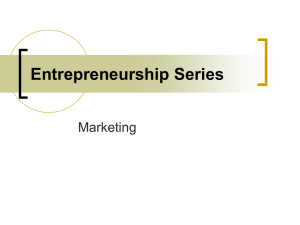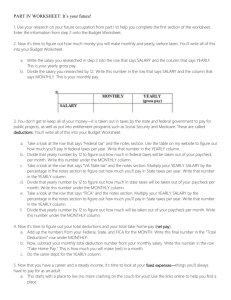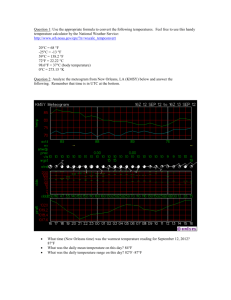Part 1
advertisement
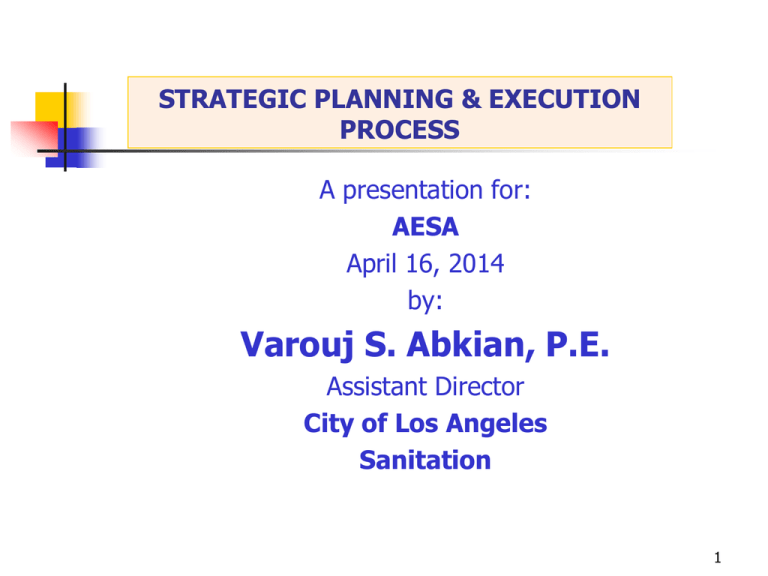
STRATEGIC PLANNING & EXECUTION PROCESS A presentation for: AESA April 16, 2014 by: Varouj S. Abkian, P.E. Assistant Director City of Los Angeles Sanitation 1 STRATEGIC PLANNING A path finding process: - who are we? - why do we exist? - where are we going? - how will we get there? - what do we hope to accomplish? - what are our strengths and weaknesses? - what are our opportunities and threats? 2 4) Key Result Areas are the areas where we concentrate our efforts and goals. 6) Strategic Planning Various terms Goal Implementation Plan specifically indicates how each goal must be achieved (list of deliverables and actions vs. time). 5) Goals are outcomes that must happen to get us closer to our vision. Goals must be SMART. pecific easurable chievable ealistic 1) Our We are here. Mission is what we do. ime dependant 3 YEARLY STRATEGIC PLANNING CYCLE Step 1 – Internal and External Environment Assessment (SWOTts) Step 2 – Define the Future in 5 years (definition of success) & How We Get There Step 3 – Reassess your Mission, Vision, Motto, and Values Step 4 – Define Key Result Areas Step 5 – Define Goals for immediate future (a few may carry on beyond one year horizon) Step 6 – Develop Goal Implementation Plans Step 7 – Write the Plan Step 8 – Communicate the Plan Step 9 – Develop Balanced Score Board (Strategic Execution) Step 10 – Monitor Progress (Strategic Execution) 4 YEARLY STRATEGIC PLANNING CYCLE Step 1 – Internal and External Environment Assessment Strengths, Weaknesses, Opportunities, Threats, and trends (SWOTts) Use of benchmarks Use of a employee driven focus group Brainstorming among management Interviewing public officials, customers and stakeholders – MOST IMPORTANT 5 THE ESENCE AND FOCAL POINT OF THE PLAN What Do we really want (where do we really want to go)? The “Definition of Success” or the Future 6 YEARLY STRATEGIC PLANNING CYCLE Step 2 – Define The Future (definition of success) Executive management – Imagine yourself 5 years into the future Look back into the past 5 years knowing that you have succeeded in everyway possible and write down the successes and achievements that really count – generate a “want” list – It should feel good! Acid test – Now think that you have failed miserably and generate a “do not want” list of failures – You should feel in pain now! Use this list only to check that you have not missed anything in the list of successes and then destroy this list! Combine the list generated by the Executive Team. Note: This list is also used to create the Key Result Areas (KRAs) Using the list, create a story and call it “Definition of Success” 7 YEARLY STRATEGIC PLANNING CYCLE Step 3 – Reassess your Mission, Vision, Motto, and Values Simplicity is power! Focus on the “Definition of Success” Review other organizations’ mission, vision and values Brainstorm and create a list of terms to use Create various versions of mission, vision, & motto, and optimize Brainstorm a list of values, prioritize them and write a definition for everyone of them Note: Mission and vision statements may change over the years but values that guide every behavior and decision must stay unchanged, so think this through! 8 YEARLY STRATEGIC PLANNING CYCLE Step 4 – Define Key Result Areas (the power of “chunking”) Focus on the list of “wants” that assisted in generating the “Definition of Success” Find the common themes or groupings of these ideas (the power of Chunking) The common themes become the key areas that you want the organizational efforts to be focused Goal are bunched under each Key Results Area (KRA) 9 YEARLY STRATEGIC PLANNING CYCLE Step 5 – Define Goals & Select Goals Definition of Success (Future) Define Key Result Areas (KRA’s) Develop Goals under each KRA Combine Goals Finalize Goals Note: Goals that are not used for at the organizational level are used within divisions or work units 10 FORMULATE GOALS $ Savings Another criteria or filter in selecting goals: C A D B Achievable 11 YEARLY STRATEGIC PLANNING CYCLE Step 6 – Develop Goal Implementation Plans Appoint leaders and supporters to write the goal implementation plans for every goal Appoint someone from the executive team to guide the formulation of the implementation plans Follow a given template Make sure all deliverables are Specific, Measurable, Attainable, Realistic and Time dependent (SMART) 12
